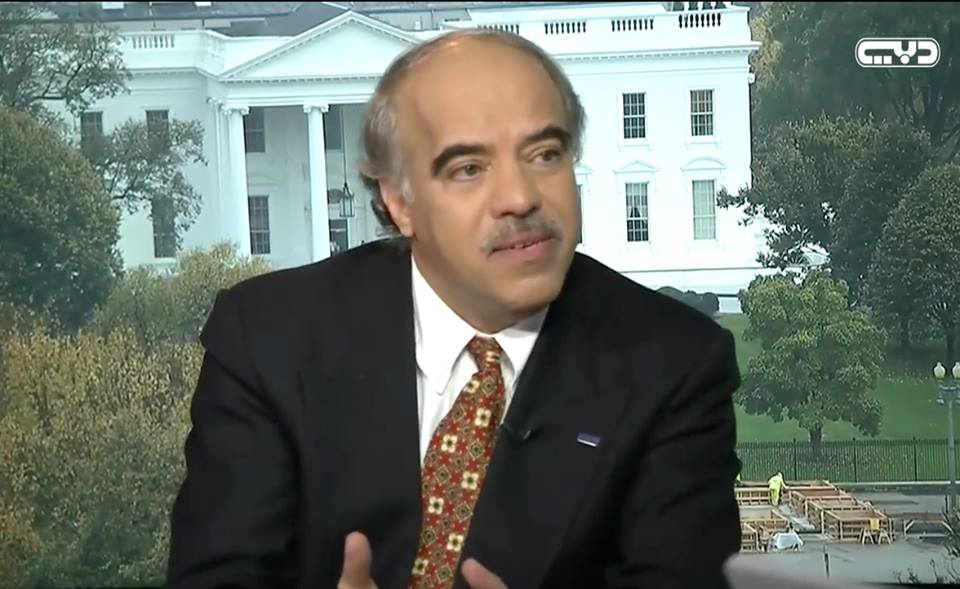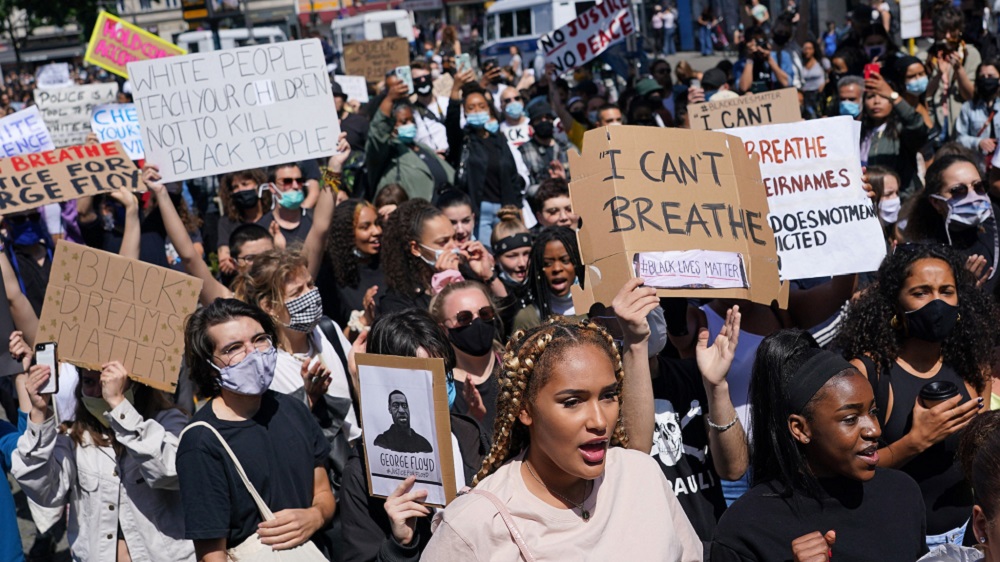
From a conflict analysis perspective, the current demonstrations across the United States, following the death of African-American George Floyd, showcase a multitude of crises of socio-economic decline, rising unemployment to 41.2 percent among white Americans and 16.7 percent among black Americans, deep concern of a post-Coronavirus gloomy horizon, and growing popular mistrust of President Trump’s policies. Floyd’s death after he was subjected to police officer Derek Chauvin’s knee pressure was a trigger event, which has reignited the Black Lives Matter movement and mobilized tens of thousands of protestors to take to the street denouncing racism and Trump’s lack of leadership and manipulation of an ‘anarchist’ discourse vis-à-vis the protestors. Minnesota's Attorney General Keith Ellison stated "We need to rewrite the rules for a just society now.”
The common scenes of popular anger and open-ended riots have implied an outcry of morality whereas the self-described “law and order” president has favored power politics. He unloaded on state governors – Democrats and Republicans alike – and described their response as “weak”. He also urged them to have a tough handling of the situation; ““You have to arrest people. “You have to dominate, if you don't dominate you're wasting your time. They're going to run over you, you're going to look like a bunch of jerks. You have to dominate.” In a critical Op-Ed published by CNN, former Secretary of Defense James Mattis castigated President Donald Trump as "the first president in my lifetime who does not try to unite the American people".(1) Furthermore, the White House decided to establish a “central command center” to monitor and combat riots. President Trump posted a video on Twitter with the message, “Anarchists, we see you!”
While appearing on Aljazeera’s “Inside Story” June 2, 2020, I was asked by the show host how I would answer a question I raised in a November 2016 paper “Donald Trump’s Presidency: New Dawn or Dooms Day?” I wondered then whether the newly-elected “President Trump would distance himself from those racist, xenophobic, misogynistic, and Islamophobic positions heralded for by Candidate Trump during his seventeen-month campaign? Will his team of advisors succeed in remodeling him into a president of inclusiveness, bi-partisan decision-making, and possibly tilting his policy toward some moderate conservatism? This paper proposes a look-back at how Candidate Trump and his electoral pledges have not shaped only his statements and public policies; but, have also solidified what can be termed as stubbornness against adjusting his political mind to the legitimacy of the presidency at the White House.”(2)
Since November 2016, Trump’s electoral victory has provoked various reflective assessments of America’s socio-economic dynamics between the white working majority, or ‘middle class’, and various minorities who have embraced the ‘American Dream’. It has also triggered new concern about the future of America’s Melting Pot philosophy. This paper probes into the driving force behind Trump’s triumph as a vengeance of the ‘forgotten White man’ in rural America. It focuses on six interrelated scenarios: first, the impetus of a self-sustaining social movement capitalizing on the ongoing “Not our President” protests across America; second, revival of Neo-Nazism in America; third, the risk of a majority dictatorship with the Republican dominance of the White House and both houses of the Congress; fourth, Trump’s self-entrapment in a catch 22-situtation between maintaining a high approval rating and modifying his polarizing positions; fifth, how his presidency embodies the new radicalism of the West; and sixth, the significance of his victory, five months after the Brexit referendum, as pursuit of one-way globalization.
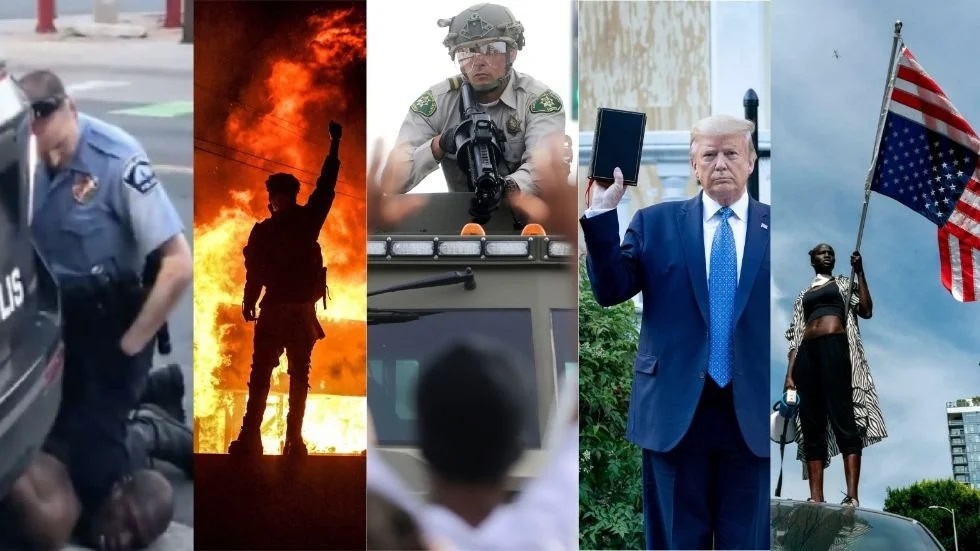
“To say that Trump’s victory was a shock may qualify as the understatement of the century. The polls were wrong. The experts were wrong. I was wrong. Almost everyone was wrong — including those in the Trump campaign who expected to lose.”(3) This is one sample of large-scale reactions of surprise and bewilderment across America and the world when American democracy falls into a state of political regression and 43 percent of the eligible voters do not go to the ballots. Unlike any other American president, Donald Trump's electoral victory has been marred by mass demonstrations in various cities across America protesting his intended policies and anti-minority advocacy. The public opinion worldwide remains skeptical about his political philosophy as it will hinder America's alliances, free trade, multiculturalism, and other pillars of liberal democracy.
The current riots across America represent a moment of judgment and rebuttal at the conjuncture between an exit from the Coronavirus dilemma and Trump’s pursuit of a second term a few weeks before the National Conventions of the Republican and Democratic parties. His rival Joseph Biden has capitalized on what seems a low point in Trump’s political performance, namely spread of fear and use of force. During an address to the nation at the peak of the riots, Biden vowed not to traffic in fear and division; “I won’t fan the flames of hate. I will seek to heal the racial wounds that have long plagued this country — not use them for political gain.”
Trump's presidency seems to affirm America has reached some uncharted territories of polarization and fragmentation into two main camps: radical right-wing conservatives in deep America versus progressive liberals in eastern and western coastal states. Many Democrats, Independents, and Republicans have mourned the death of American democracy and feared a new era of authoritarianism. For example, American historian Neal Gabler wrote in his “Farewell, America” article, “America died on November 8, 2016, not with a bang or a whimper, but at its own hand via electoral suicide. We the people chose a man who has shredded our values, our morals, our compassion, our tolerance, our decency, our sense of common purpose, our very identity — all the things that, however tenuously, made a nation out of a country.”(4)
Many Americans remain fearful of the worst-case scenario in the next four years: “fascism, a wall, mass deportations, the end of Obamacare, a Trump brand on the White House and either a trade war or an actual war with China (since war is the easiest diversion from domestic unhappiness).”(5) Above all, many politicians and intellectuals – liberal and conservative – caution against some imminent chaos since Trump is a man with “a disordered personality and authoritarian tendencies.”(6) Accordingly, his electoral victory has been perceived a “declaration of a social civil war.”(7)
CNN has called the June 2020 riots “an unprecedented revolt from the elite corps of ex-military leaders and presidents over his brazen response to mass protests and inflaming of racial divides.”(8) James Mattis, or the so-called “Mad Dog” general, has resisted Trump’s intent of sending the U.S. military to “quickly solve” the problems of looting and rioting if Mayors and Governors did not act forcefully enough. Trump evoked indirectly an old Insurrection Act, adopted in 1807, which allow the president, without congressional approval, to employ the military for domestic use in certain circumstances.(9) Other military figures have cautioned against Trump’s military venture; retired vice chairman of the Joint Chiefs of Staff, Adm. Sandy Winnefeld, stated, “We are at the most dangerous time for civil-military relations I’ve seen in my lifetime.”(10)
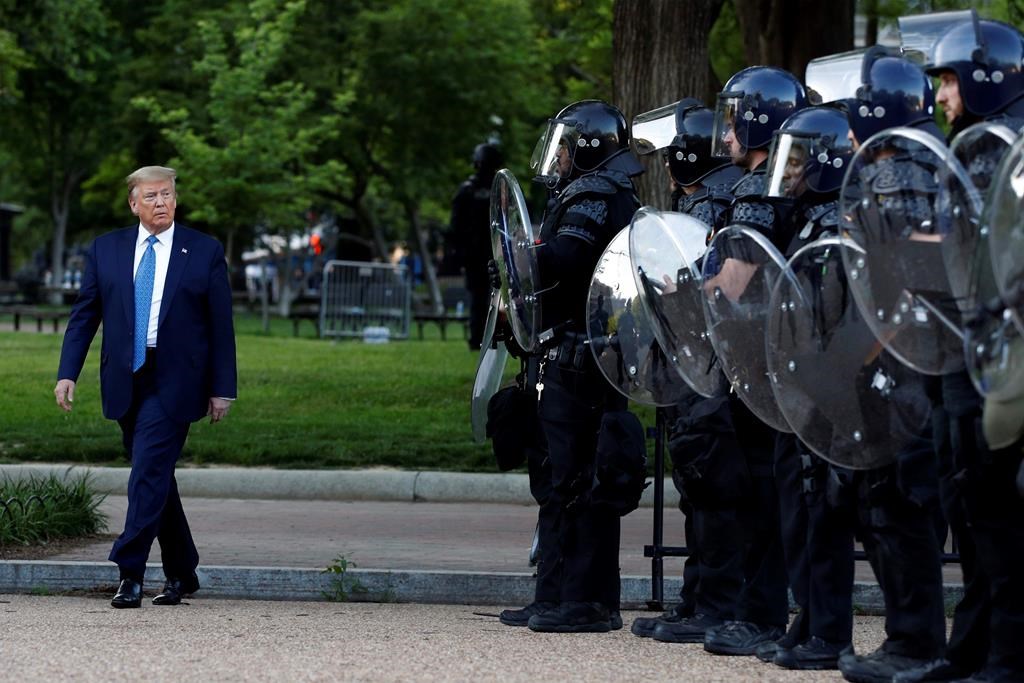
A number of legal experts have reflected on the validity of Trump’s strategy and whether it conforms with the existing laws. Noah Feldman, a Harvard University law professor believes the broad language of the Insurrection Act means Trump “might have a case” that the rioting and looting “is obstructing execution of federal law to the extent that local police and the National Guard can’t successfully stop violence on the streets.”(11) Another law professor of the University of Texas Stephen Vladeck also points out Trump “would be within his rights -- whether we like it or not -- to use the federal military in at least some of these localities where we’ve seen multiple nights of domestic disorder and where there are genuine concerns about whether local authorities are in a position to adequately respond to and calm the threat.”(12)
With an assertive tone and a straight-shooting discourse, Mattis wrote in Federalist 14, “We must reject any thinking of our cities as a "battlespace" that our uniformed military is called upon to "dominate." At home, we should use our military only when requested to do so, on very rare occasions, by state governors. Militarizing our response, as we witnessed in Washington, D.C., sets up a conflict—a false conflict— between the military and civilian society. It erodes the moral ground that ensures a trusted bond between men and women in uniform and the society they are sworn to protect, and of which they themselves are a part.”(13)
Within the current cabinet, Defense Secretary Mark T. Esper broke with President Trump that active-duty military troops should not be sent to control the wave of protests in American cities, at least for now. He maintains the deployment of active-duty troops in a domestic law enforcement role “should only be used as a matter of last resort and only in the most urgent and dire of situations.”(14) There is concern within the military establishment in Washington over the loss of public support. People of color make 40 percent of the active duty and reserve personnel. Chairman of the Joint Chiefs of Staff, Gen. Mark A. Milley, has released a message to top military commanders affirming that every member of the armed forces swears an oath to defend the Constitution, which he said “gives Americans the right to freedom of speech and peaceful assembly.”(15)
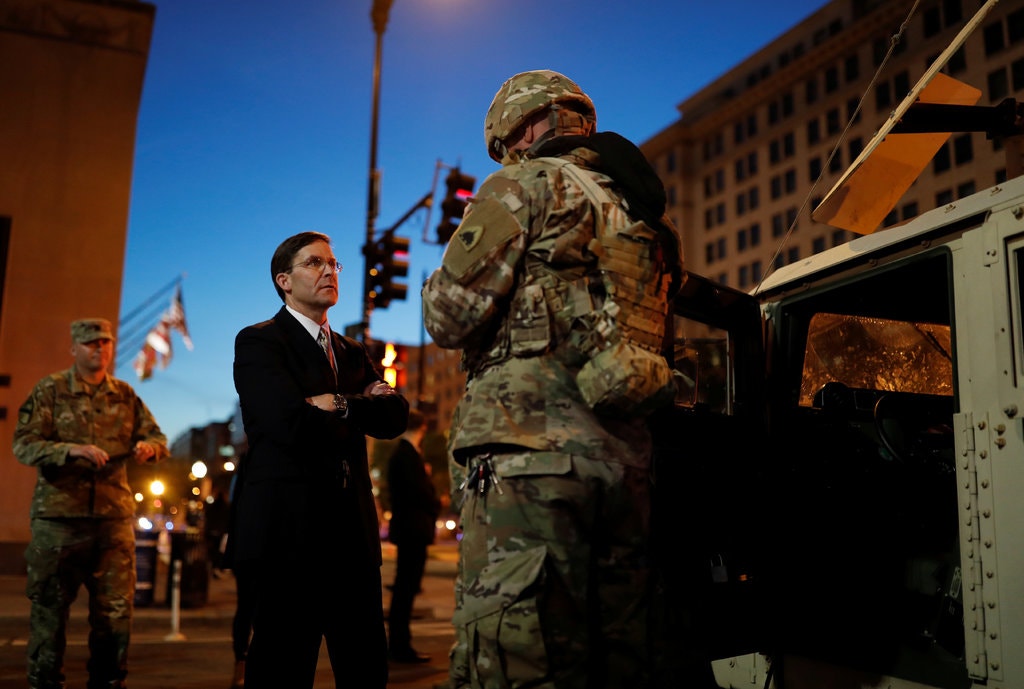
“Not our President” Protests and Deep-rooted Uncertainty
Large segments of Democrats, Independents, as well as Republicans wonder whether America has entered a danger zone after electing its 45th president this year. As a hyper political philosophy, Trumpism has embedded the Republican Party with unprecedented narratives of misogyny, racism, xenophobia, and Islamophobia. Shortly after Trump’s victory, a new conflict escalated between his backers and detractors disputing the validity of two rival narratives: ‘constitutional legitimacy’ as decided by the ballots whereas his presidency lacks ‘popular legitimacy’ due to his failure to win the popular vote which is irrelevant vis-à-vis the Electoral College. Unlike his predecessors, Trump starts his mandate with a deficit in popular acceptance mainly among the youth, minorities, and liberal elite.
An open-ended wave of mass protests has burned effigies and shouted angry slogans “Not our president” and “New York hates Trump”, and carried “Dump Trump” signs in cities as diverse as New York, Dallas and Oakland and included marches in Boston; Chicago; Portland, Oregon; Seattle and Washington and at college campuses in California, Massachusetts, and Pennsylvania.(16) Apparently, Trump’s tweeted message "We will all come together and be proud!" has been ignored. Security barricades shield some of his most visible properties, including the newly-opened Trump International Hotel near the White House in Washington and Trump Tower in New York.
Through a Facebook page titled “Not My President”, activists have called for protesters to gather on Inauguration Day in Washington as they “refuse to recognize Trump as the president of the United States, and refuse to take orders from a government that puts bigots into power.” In California one of the biggest states and the world’s sixth economy, activists have renewed their call for their state to break away from the Federal Union and return to the ‘rebel state’. Shervin Pishevar, a co-founder of Hyperloop One, announced that he would back a “legitimate campaign” for California to become its own nation.
For some analysts, Trump’s victory represents “a mystery that may lead to calamity.”(17) Others argue his victory wasn’t just a surprise; “it was an event of gigantic dimensions, its radiating effects incalculable.”(18) It could also be perceived as “the consolidation of a misogynistic white united front” and how right-wing populism seeks a return to the era of the “white republic.”(19) Other intellectuals point to the risk of entering an iconoclastic phase in American politics is, and “the icons being targeted are the moral foundations of our democracy.”(20) Harvard Government professor Dani Rodrik gives a rather sinister projection of Trump’s presidency; “The ugliness that characterized politics during the presidential campaign may be nothing compared with what may be yet to come.”(21) Nearly four years later, Gen. Mattis argues “We are witnessing the consequences of three years of this deliberate effort. We are witnessing the consequences of three years without mature leadership. We can unite without him, drawing on the strengths inherent in our civil society.” (22)
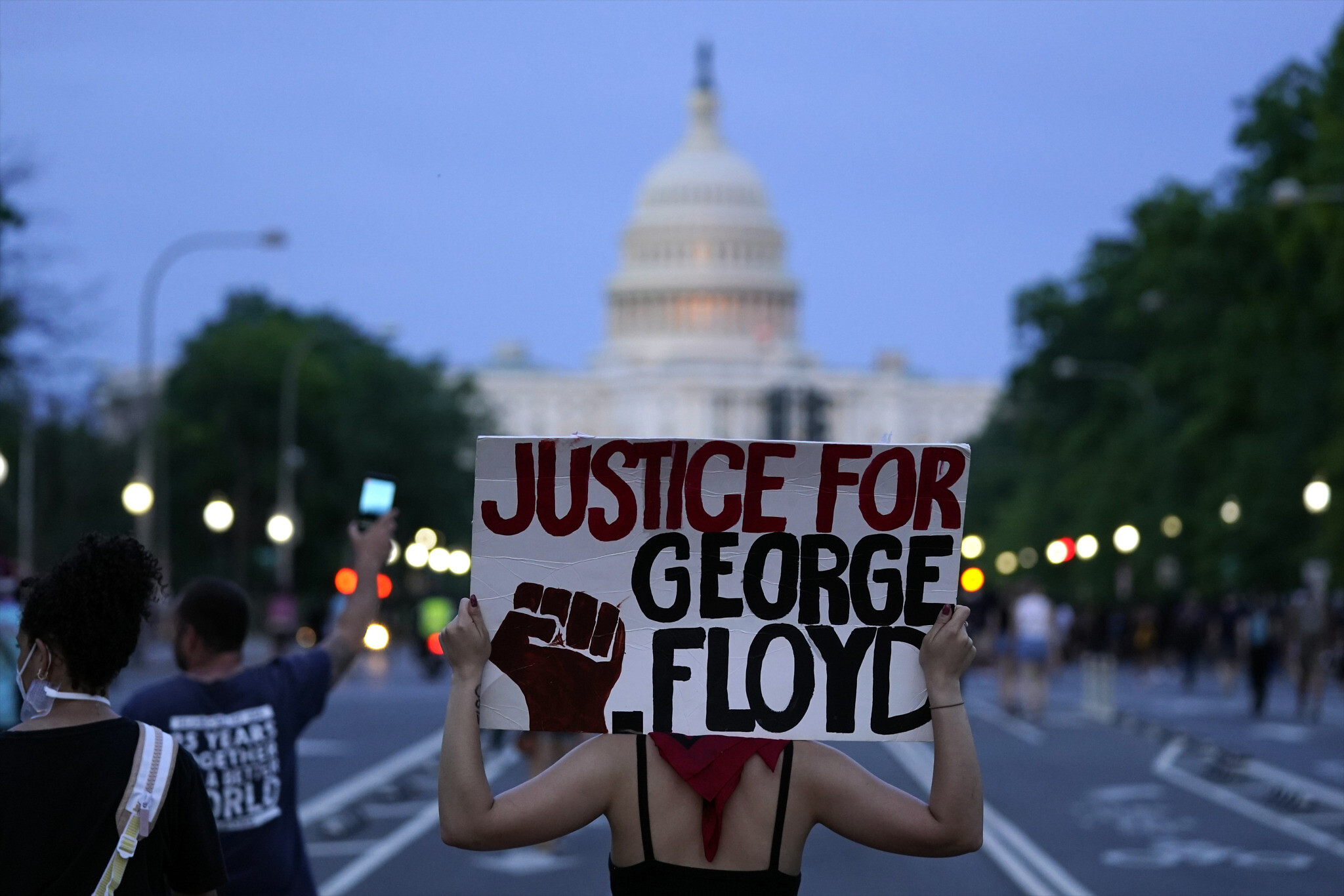
Revival of Neo-Nazism in America
One of Trump’s early controversial decisions was the appointment of Stephen Bannon, former Breitbart News executive, as his Chief Strategist and Senior Counselor at the White House. It was condemned inside the Congress as well as by several Muslim-American and Jewish-American organizations alike. House Democratic leader Nancy Pelosi said "there must be no sugarcoating the reality that a white nationalist has been named chief strategist for the Trump administration." The Council on American-Islamic Relations considered it to be “the disturbing message that anti-Muslim conspiracy theories and White nationalist ideology will be welcome in the White House."(23)
Jonathan Greenblatt, CEO of the Anti-Defamation League, stated "It is a sad day when a man who presided over the premiere website of the 'alt right' — a loose-knit group of white nationalists and unabashed anti-Semites and racists — is slated to be a senior staff member in the 'people's house."(24) Similarly, Rabbi Alissa Wise, Deputy Director of Jewish Voice for Peace, contested the decision since it is “a confirmation of exactly what Trump promised throughout his campaign: the open endorsement of racism, xenophobia, Islamophobia and anti-Semitism.”(25)
Another alarming indicator of the solidification of white nationalism across America is the intent of the white supremacist group Ku Klux Klan to organize a parade in North Carolina to celebrate Trump’s win on the 3rd of December 2016. The group’s website reads, “TRUMP = TRUMP’S RACE UNITED MY PEOPLE.” In one recent article published in its newspaper The Crusader, the group asserts that “America was founded as a White Christian Republic," it continues. "And as a White Christian Republic it became great."
Former Ku Klux Klan leader David Duke called Trump’s victory “one of the most exciting nights of my life.” He also tweeted this assertive claim one day after the elections “Make no mistake about it, our people have played a HUGE role in electing Trump! #MAGA.” Ironically, one of the reactions to the Bannon-KKK common white nationalism was a tweet that reads, “@realDonaldTrump didn’t take long to start paying his bills for the win. Hired Stephen Bannon KKK leader to the White house.”
Students at Royal Oak Middle School in Royal Oak, Michigan chanted “build that wall!” during their lunch period, echoing Trump’s promise to build a wall on the Mexican border. In a separate incident the same week, the rector at the Episcopal Church of Our Savior in Silver Spring, Maryland opened the church on Sunday morning to find a sign advertising Spanish services had been ripped and vandalized with the words, “TRUMP NATION WHITES ONLY.” The reemergence of these hatred-driven attitudes across several states have alarmed many Americans with the possibility of drifting towards Nazism and Fascism. In Tuscan, Arizona, a number of college students demonstrated on campus carrying banners that read “Make AmeriKKKA Great Again.”
KKK had announced its support for Trump during his campaign. The number of supremacist groups has risen to 862 advocating ‘White Power’ as an exclusive America for the Aryan nation only while rejecting the existence of various minorities by the end of 2016. The Southern Poverty Law Center received 200 hate crime reports in the first five days after the election. Throughout the presidential campaigns since June 2015, there were 257 reports of assaults, attacks on mosques and other hate crimes against Muslims last year, a jump of about 67 percent over 2014. The F.B.I. cataloged a total of 5818 of anti-Muslim hate crimes — a rise of about 6 percent over the previous year — including assaults, bombings, threats, and property destruction against minorities, women, gays and others.(26)
The New York Times republished the summary of its first article about Adolf Hitler [21st of November 1922] to showcase some parallels between the then- and now anti-Semitism. The article points to the subtle hatred advocacy in Hitler’s and Trump’s discourses. It reads: “A sophisticated politician credited Hitler with peculiar political cleverness for laying emphasis and over-emphasis on anti-Semitism, saying: “You can’t expect the masses to understand or appreciate your finer real aims. You must feed the masses with cruder morsels and ideas like anti-Semitism. It would be politically all wrong to tell them the truth where you are really leading them.”(27)
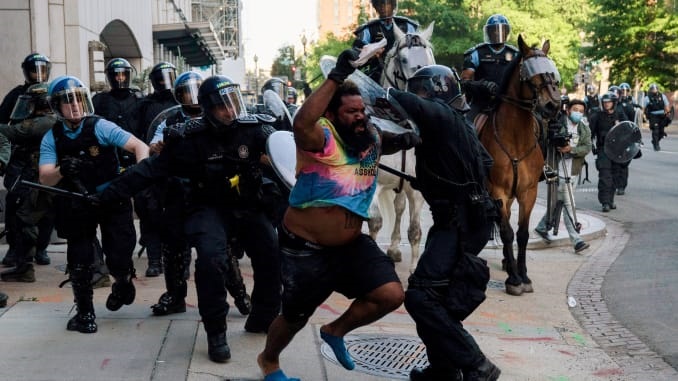
The Nightmarish Prediction
Six years before Trump became President-elect, philosopher and historian Noam Chomsky sensed some real trouble in America because of “the frustration, disillusionment, the justified anger and the absence of any coherent response.” He expressed concern about some growing socio-psychological trends since “the mood of the country is frightening. The level of anger, frustration, and hatred of institutions is not organized in a constructive way. It is going off into self-destructive fantasies.”(28) Chomsky offered a dark vision of America's future that was easily dismissed and was proved valid this year. He warned of the success a "charismatic figure" would have if one ran for office promising to cure society's ills, and listed elements of their campaign that would take them to power. The similarities to Trump are manifold and clear, from military force being exalted (Trump consistently heaps praise on the army and secret service) to the scapegoating of illegal immigrants”.(29)
Other American intellectuals pointed to the social malaise and political unresponsiveness early in the campaigns. Michael Lind, author of “Land of Promise: An Economic History of the United States”, proclaimed that “the old political system is crumbling, and a new American political order is being born… The partisan coalitions that defined the Democratic and Republican parties for decades in the middle of the twentieth century broke apart long ago; over the past half century, their component voting blocs — ideological, demographic, economic, geographic, cultural — have reshuffled. The reassembling of new Democratic and Republican coalitions is nearly finished.”(30)
Harvard economist Dani Rodrik believes the real danger Trump poses is “the undermining of our politics — the norms that sustain our liberal democracies. His campaign was based on a divisive politics of identity. Ideals of equity, equal rights, diversity and inclusion were submerged under the weight of a rhetoric that raised racial and ethnic tensions and inflamed passions against imagined enemies — Mexican immigrants, Chinese exporters, Muslim refugees.”(31) In this backdrop, Trump went beyond the political noise in major cities to echo the discontent of rural America, to capitalize on the socio-economic failures of both parties – Democrat and Republican – and to position his candidacy as the anti-establishment, populist, and future pragmatist CEO of America.
The Vengeance of the ‘Forgotten White Man’
The gap of the electoral results was staggering in rural counties where 90.5 percent of the votes chose Trump whereas 9.5 percent went for Clinton. However, educational attainment had an opposite effect in counties where at least 50 percent of adults have bachelor’s degrees; 79.1 percent of them voted for Clinton versus 20.9 percent for Trump. As Robert Reich, a leading Democrat and former Secretary of labor in the Clinton Administration, points out, “median family income is lower now than it was 16 years ago, adjusted for inflation. Workers without college degrees – the old working class – have fallen furthest. Most economic gains, meanwhile, have gone to top. These gains have translated into political power to elicit bank bailouts, corporate subsidies, special tax loopholes, favorable trade deals and increasing market power without interference by anti-monopoly enforcement – all of which have further reduced wages and pulled up profits.”(32)
One can argue that the main driver behind Trump’s victory is these forgotten white folks who have been negatively impacted by the 2008 financial crisis and the growing wave of outsourcing of jobs. Trump has spoken directly to that pain. In his victory speech, he paid homage to “the forgotten men and women of our country,” vowing that they “will be forgotten no longer.” This social malaise seemed to be a déjà vu decline of deep America. Many researchers have gone back to the works of sociologist William G. Sumner who coined the term “forgotten man” when he published his political essay “What the Social Classes Owe to Each Other” near the dawn of the Progressive Era (1890s-1920s). He lamented the lost autonomy of hard-working citizens suddenly forced to pay for high-flown programs of social reform.(33)
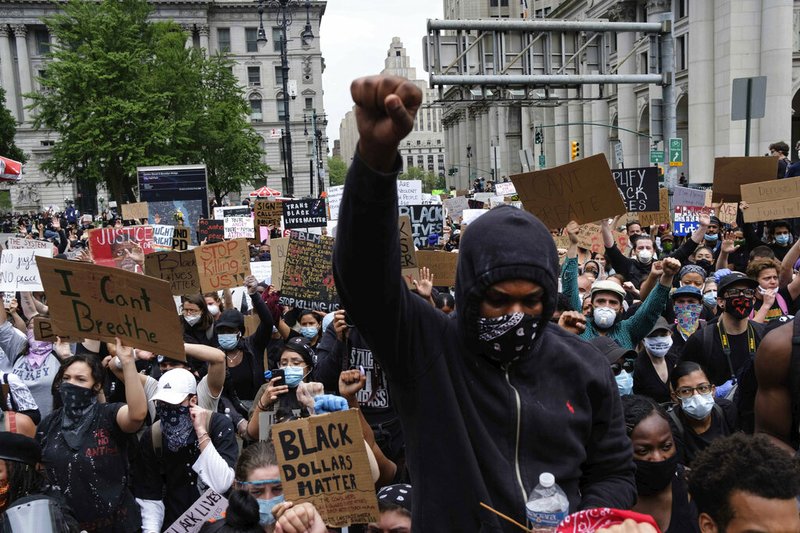
Trump adopted this social prototype and put it back into political circulation in 2016 as a gesture of solidarity with the old ways of thinking about the “silent majority” and the “forgotten American.” And though he included “men and women” in his victory speech, Trump’s campaign mobilized around the same image that once animated the Roosevelt coalition: the “forgotten” white working-class man.(34) Yale historian Beverly Cage proposes an interesting reflection about the centrality of this social category as she argues, “this essential political idea — that a vast segment of the nation’s white citizens have been overlooked, or looked down upon — has driven every major realignment in American politics since the New Deal.”(35)
From a global perspective, author and social activist Naomi Klein points to the failure of neoliberal policies of deregulation, privatization, austerity and corporate trade. She draws a parallel between Trump’s victory and the Brexit in the way they have answered “with nostalgic nationalism and anger at remote economic bureaucracies – whether Washington, the North American free trade agreement the World Trade Organization or the EU. And of course, they answer it by bashing immigrants and people of color, vilifying Muslims, and degrading women. Elite neoliberalism has nothing to offer that pain, because neoliberalism unleashed the Davos class… Trump’s message was: “All is hell.” Clinton answered: “All is well.” But it’s not well – far from it.”(36)
Moreover, there has been a blind spot in the pursuit of equal opportunity, or meritocracy, as a driving force behind America’s liberal democracy. This year’s election can be perceived as a battle of economism between urban development and rural under-development. Political scientist Fareed Zakaria points to the consequences of meritocracy “where people from all economic walks of life can move up the ladder of achievement and income (usually ending up in cities). It is better than using race, gender or bloodlines as the key to wealth and power, but it does create its own problems. As in any system, some people won’t ascend to the top, and because it is a meritocracy, it is easy to believe that that’s justified.”(37)
As a result, Trump capitalized on this disgruntled collective mood of deep America to solidify his white nationalism, economic populism, and anti-establishment impulses. He took workers’ social and economic ills produced as much by Democrats as by Republicans, and “fed them through a racial grinder to make his alt-white sausage. He created an identity that a majority of the white working class and middle class flocked to. It is racist, but it’s not fixed. And much of this failure to retain a majority of the white working class in the Democratic Party lays with organized labor, which does little organizing beyond get-out-the-vote and contract negotiation campaigns.”(38) As Trump’s motto “Make America Great Again” echoes the loss of the old good days, it projects a mythical past to which WASP America must return. Right-wing populism, nativism, Islamophobia, Hispanophobia represent various roads that lead to one destination: White Republic or the resurrection of the new world of WASP.
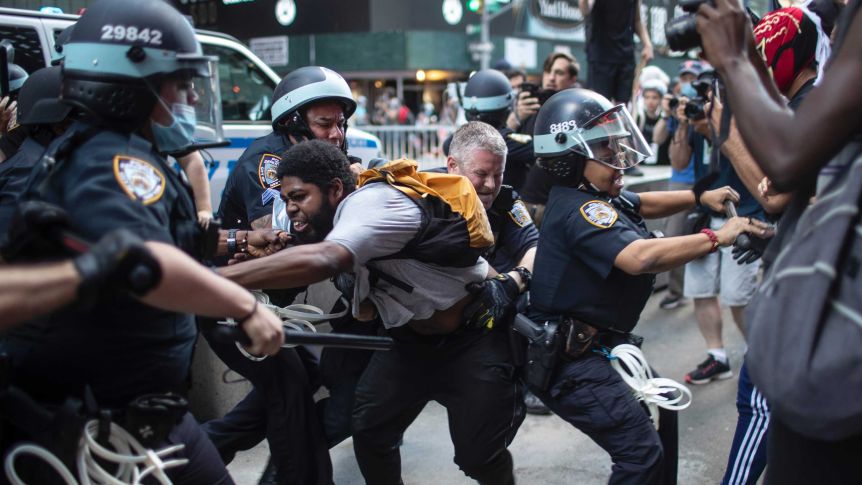
The Risk of a Majority Dictatorship
While campaigning at Gettysburg, Pennsylvania a few days before the Election Day in 2016, Trump announced his seven-point “Contract with America” for his first 100 days in office: 1) renegotiation of NAFTA or withdraw from the deal under Article 2205; 2) withdrawal from the Trans-Pacific Partnership (TPP); 3) label of China as a currency manipulator; 4) identification of all foreign trading abuses that unfairly impact American workers and use of every tool under American and international law to end those abuses immediately; 5) lifting the restrictions on the production of $50 trillion dollars' worth of job-producing American energy reserves, including shale, oil, natural gas and clean coal; 6) lifting the Obama-Clinton roadblocks and allowing vital energy infrastructure projects, like the Keystone Pipeline, to move forward; and 7) cancelation of billions in payments to U.N. climate change programs and use the money to fix America's water and environmental infrastructure
This is a mixed recipe of political isolationism and economic protectionism. Even before stepping into the White House, Trump has radically transformed the GOP in a year, turning it into an anti-free trade and anti-interventionist party reluctant to cut retirement programs. As some observers point out, “his trick was to stoke the right’s racism and misogyny, which is now being portrayed as a regular Joe backlash against arrogant coastal elites.”(39)
To many Americans, he is a “thin-skinned tyrant” who may push an American dictatorship into a realistic possibility, because “80 years of progressive politics have left us with its vital elements fully contained within our system of government.”(40) In “The Eighteenth Brumaire of Louis Napoleon”, Karl Marx famously blamed the French bourgeoisie for the dictatorship of Louis-Napoleon. The dictatorship “was contained in a finished state within the parliamentary republic,” wrote Marx. “It only required a bayonet thrust for the bubble to burst and the monster to spring forth before our eyes.” Some American legal scholars, like Adrian Vermeule and Eric Posner, believe that Congress could delegate all legislative authority to the president, without concern for the Constitution’s separation of powers, because political constraints will be enough to prevent the establishment of a dictatorship.(41)
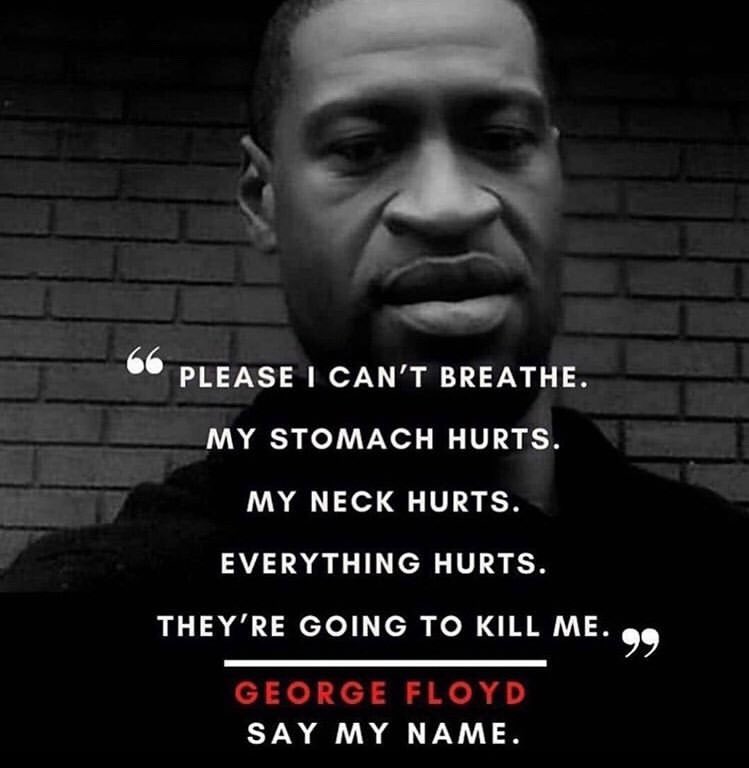
Trump’s Self-entrapment
Trump’s presidency seems to go through a catch-22 challenge in his transformation from ‘Candidate Trump’ to ‘President Trump’. The stakes are high whether he keeps the declared pledges he made during his seventeen-month campaign. If he insists on fulfilling them, they will be destructive for America before any other nation. If he does not, his credibility with his 59 million-man-and-women base will translate into a low approval rating for an incoming president. Still, the first scenario raises legitimate fear that the United States could well be at some dark turning point akin to the rise of fascism and totalitarianism in Europe in the early 1930s. Trumpism may trickle down though various American institutions in Washington and abroad. In his “Terror and Consent: The Wars for the Twenty-first Century” book, former National Security Council staffer Philip Bobbitt affirms there are times when it is incumbent on government officers and officials to “break the law” in order to protect the nation.
One needs to revisit the evolution of political regimes through the premise and risk of popular representation, while Trump remains the tyrannical soul par excellence. According to Plato, one can predict their evolutionary course: from oligarchy, to democracy to tyranny. Oligarchies give way democracies when the elites fail, when they become spoiled crazy, and when they develop interests apart from those they rule (as is the case of the Democratic Party and its liberal elite). The result as some analysts predicted before the election, democracies give way to tyrannies when mob passion overwhelms political wisdom and a populist autocrat seizes the masses.(42)
However, the picture may not be that bleak. Trump’s team of advisors will have to persuade him to relinquish most of those radical positions. As it is most likely to happen, he will run the imminent risk of losing his credibility and approval rate in the first one-hundred days at the White House. Still, global strategist Zachary Karabell argues that “the reality does not match the fear. Presidents find themselves constrained from every side—and far more than autocrats or generals. Any president would need the active complicity of thousands and thousands of skilled and able bodies to even begin to do what many fear Trump will do.”(43)
One of the early indicators of this evolutionary Trumpism, as an inexperienced political philosophy of leadership, is his softening tone about several core promises of his campaign. Now, he is quite flexible about building a possible part-wall-part-fence divider on the US-Mexican border, and deporting up to 3 million undocumented immigrants with a criminal record, instead of the entire 12 million illegal immigrants to America. Trump will also keep some parts of the Obamacare law intact and may seek to amend the statute unlike his pledge to “repeal and replace” the health plan.
Europe’s Unwelcoming Welcome of Trump
Most of the world leaders have announced well-calculated, if not cold, welcomes to Trump’s victory. German Chancellor Angela Merkel implied America’s need to remain committed to the values and virtues of Liberal democracy. As she said in a statement, “Germany and America are connected by values of democracy, freedom and respect for the law and the dignity of man, independent of origin, skin color, religion, gender, sexual orientation or political views… I offer the next President of the United States close cooperation on the basis of these values.”(44) Guy Verhofstadt, the leader of a prominent group of lawmakers in the European Parliament and a former prime minister of Belgium stated that “Trump has declared several times that our priorities are not his… We cannot be dependent anymore on the U.S., we have to take charge of our own destiny. Europe should get its act together, too, and set its internal differences aside.”(45)
The future of NATO and the transatlantic alliance will be a major test to Trump’s presidency after he positioned himself as the protector of America’s national security. He has demanded during the campaign that the NATO allies foot more of the bill for their collective defense. However, Jens Stoltenberg, the NATO Secretary General, noted that the alliance comes with legal obligations: “NATO’s security guarantee is a treaty commitment and all allies have made a solemn commitment — a solemn commitment — to defend each other,” Mr. Stoltenberg said. “We have to remember that the only time that we have invoked Article 5, our collective defense clause, is after an attack on the United States, after 9/11.”(46)
New Radicalism of the West
Trump has often presented his campaign as a ‘movement of change’. Shortly after his electoral win, his strategist advisor Steve Bannon said in an interview with a right-wing radio show “this whole movement has a certain global aspect to it. People want more control of their country. They’re very proud of their countries. They want borders. They want sovereignty. It’s not just a thing that’s happening in any one geographic space.”(47)
On the other side of the Atlantic, Nigel Farage, one of Brexit's main boosters and a loud British advocate for Trump, stated he was not particularly surprised because “the political class is reviled across much of the West, the polling industry is bankrupt, and the press just hasn’t woken up to what’s going on in the world; so, 2016 is, by the looks of it, going to be the year of two great political revolutions. I thought Brexit was big, but, boy, this looks like it’s going to be even bigger.”(48)
Trump’s electoral victory was a wake call for all democratic nations to consider the solidification of the global right-wing and discriminatory politics in Europe and beyond. Trump comes to power as “right-wing movements are in the ascendancy around the world: Illiberal and reactionary politics have fueled support for governments in Russia, Turkey, India and the Philippines and threaten to further fracture the European Union.”(49) Trump’s presidency has boosted a constellation of populist movements across Europe, and provides some ideological capital for isolationists like Marine Le Pen, leader of France's far-right National Front, and Geert Wilders in the Netherlands. Gérard Araud, the French ambassador to the United States, summarized the widespread feeling of disappointment and caution as he said “A world is collapsing before our eyes.”
One cannot simplify the trajectory of this global right-wing surge in the United States and Europe. Unlike the consecutive completive waves between liberalism and realism which have shaped American politics since the end of WWI, I argue that Trump’s victory showcases how the United States has embarked on a new path of radicalism. Unfortunately, the very liberal democracy which has been the product of the Enlightenment Age and Immanuel Kant’s moral political philosophy has derailed into a new path of obscurity, isolation, xenophobia and racism.
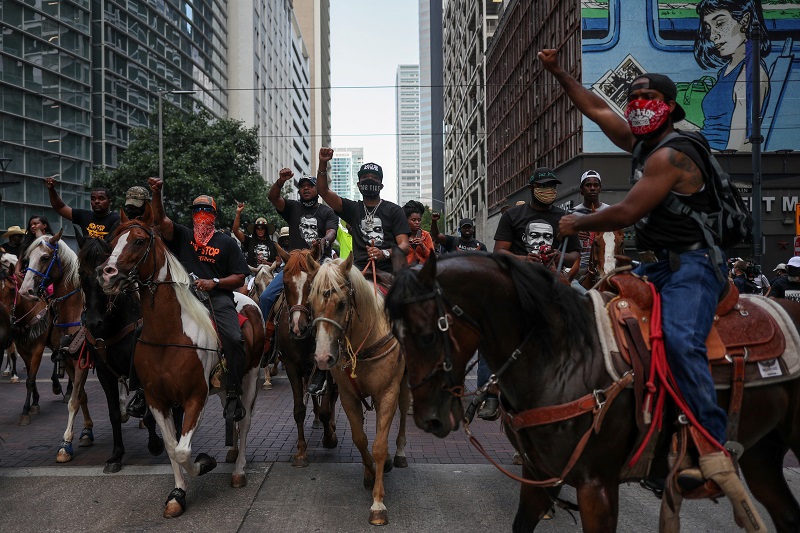
Conclusion: The Gradual Softening of Trumpism
1. From Hard-Line Campaigner to ‘Mr. Flexible’:
By considering the early shifts in Trump’s positions towards Obamacare, deportation of undocumented immigrants, and the Muslim ban, one can predict he will give up about seventy percent of his campaign pledges under the pretext of the national interests and his sense of pragmatic policies. This will not stop him from taking some symbolic decisions to justify he will not flip-flop between the hard-line reforms announced during the campaign and moderate, and possibly centrist, policies at the White house.
2. Trump’s Enthusiasm or the Congress Institutionalism?
Despite Candidate Trump’s ego-inflated language of ‘draining the swamp” in Washington, President Trump has shown some readiness to work closely with the Republican majorities in the House and the Senate. One good indicator is the destiny of Trump's proposal to impose term limits on Congressmen.
Within the first week after the election, Senate Republican majority leader Mitch McConnell said "It will not be on the agenda in the Senate." McConnell has been a long-standing opponent of term limits. As he added, "I would say we have term limits now — they're called elections."
3. Trump’s Fight with the Media
Trump has frequently attacked the media and contested what he perceives as ‘liberal bias.’ He has vowed to restore the libel law and take his critics to court namely the New York Times. The question remains whether he will able to amend the 1st amendment which has protected the right of critique and transparency and curtailed the abuse of power throughout the history of the United States. In short, Trump’s presidency will be a threat to the freedom of the press if his tyrannical impulses remain robust.
4. Trump, Brexit, and One-way-Globalization
As a Westphalia-minded leader by accident, Trump believes that the nation-state, not the international order, is “the true foundation for happiness and harmony.” His integrative vision of political isolationism and economic protectionism seems to reject free trade, open borders, cosmopolitanism and multiculturalism. As he stated passionately, “We will no longer surrender this country, or its people, to the false song of globalism.”
Trump’s victory and the Brexit have pivoted, five months apart, around “the lost sovereignty” and “the lost ability to control the borders”. Both philosophies call for protecting the borders, stopping immigration, refusing refugees even on humanitarian considerations, and imposing trade tariffs on foreign imports. They also share the same fear-oriented vision of anti-globalism and anti-globalization. Harvard political scientist Joseph Nye laid consider globalism as “the underlying basic network”, while globalization refers to “the dynamic shrinking of distance on a large scale.”(50)
Trump's presidency will go into the history books as the era of several battles: globalization which became the central axis of conflict between globalists and nationalists. The irony is that Trumpism and Brexit are selective about the ‘virtues’ and the ‘vices’ of globalization. They seek to redesign globalization as a one-way ticket by which the industrial North can maintain its benefit from the resources of the South without bearing its consequences of immigration and cosmopolitanism. His presidency will also be remembered by a revival of white nationalism and the decline of multiculturalism of the often-characterized as the land of the melting pot and American dream. There has been a growing debate about Trump’s intent to ignore America’s morals and institutions. As Robert Jervis put it, “leaders and others concerned with politics do not have to believe that they are making the country better-off by doing injustice in the world or, conversely, that by honoring the values that their country holds dear they are endangering its security or reducing its wealth.”
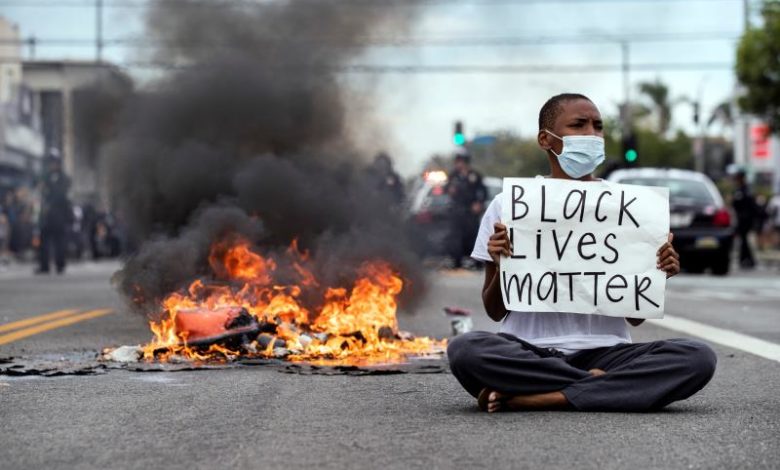
(1) J. Mattis, “Former Defense Secretary Mattis' statement on Trump and protests”, CNN June 3, 2020 https://edition.cnn.com/2020/06/03/politics/mattis-protests-statement/i…
(2) M. Cherkaoui, “Donald Trump’s Presidency: New Dawn or Dooms Day? Aljazeera Centre for Studies, November 27, 2016 https://studies.aljazeera.net/en/reports/2016/11/donald-trumps-presiden…
(3) P. Wehner, ”When the Decent Drapery of Life Is Rudely Torn Off” The New York Times, 10 November 2016 (Visited 10 November 2016) http://www.nytimes.com/interactive/projects/cp/opinion/election-night-2…
(4) N. Gabler, “Farewell, America”, Moyers and Company, 10 November 2016 (Visited 10 November 2016) http://billmoyers.com/story/farewell-america/
(5) V. Nguyen, “the End of the Empire”, The New York Times, 10 November 2016 (Visited 10 November 2016) http://www.nytimes.com/interactive/projects/cp/opinion/election-night-2…
(6) P. Wehner, ”When the Decent Drapery of Life Is Rudely Torn Off” The New York Times, 10 November 2016 (Visited 10 November 2016) http://www.nytimes.com/interactive/projects/cp/opinion/election-night-2…
(7) A. Gupta, “Trump Won Because the Democratic Party Failed, Not Because the White Working Class Revolted”, In These Times, 11 November 2016 [Visited 12 November 2016] http://inthesetimes.com/article/19626/trump-won-because-the-democratic-…
(8) S. Collinson, “Military leaders condemn Trump over protest response”, CNN, June 4, 2020 https://edition.cnn.com/2020/06/04/politics/donald-trump-james-mattis-e…;
(9) P. Hurtado and B. Voris, “What the Law Says About Deploying Troops on U.S. Soil,” The Washington Post, June 3, 2020 https://www.washingtonpost.com/business/what-the-law-says-about-deployi…
(10) E. Schmitt, H. Cooper, T. Gibbons-Neff and M. Haberman, “Esper Breaks With Trump on Using Troops Against Protesters”, the New York Times, June 3, 2020 https://www.nytimes.com/2020/06/03/us/politics/esper-milley-trump-prote…
(11) P. Hurtado and B. Voris, “What the Law Says About Deploying Troops on U.S. Soil,” The Washington Post, June 3, 2020 https://www.washingtonpost.com/business/what-the-law-says-about-deployi…
(13) J. Mattis, “Former Defense Secretary Mattis' statement on Trump and protests”, CNN June 3, 2020 https://edition.cnn.com/2020/06/03/politics/mattis-protests-statement/i…
(14) 10. E. Schmitt, H. Cooper, T. Gibbons-Neff and M. Haberman “Esper Breaks With Trump on Using Troops Against Protesters”, the New York Times, June 3, 2020 https://www.nytimes.com/2020/06/03/us/politics/esper-milley-trump-prote…
(16) C. Mele, and A. Correalnov, “Not Our President’: Protests Spread After Donald Trump’s Election”, the New York Times, 9 November 2016 (Visited 10 November 2016) http://www.nytimes.com/2016/11/10/us/trump-election-protests.html?actio…
(17) P. Wehner, ”When the Decent Drapery of Life Is Rudely Torn Off” The New York Times, 10 November 2016 (Visited 10 November 2016) http://www.nytimes.com/interactive/projects/cp/opinion/election-night-2…
(19) B. Fletcher, “The Election was a Referendum on Globalization and Demographics—Not Neoliberalism”, In These Times, 10 November 2016 [Visited 11 November 2016] http://inthesetimes.com/article/19622/the-election-was-a-referendum-on-…
(20) D. Acemoglu, “American Democracy, and This Election isn’t Enough to Fix It”, Foreign Policy, 7 November 2016 http://foreignpolicy.com/2016/11/07/american-democracy-is-dying-and-thi…
(22) D. Rodrik, “What’s the Biggest Fear of Trump Presidency? The New York Times, 10 November 2016 http://www.nytimes.com/interactive/projects/cp/opinion/election-night-2…
(23) J. Mattis, “Former Defense Secretary Mattis' statement on Trump and protests”, CNN June 3, 2020 https://edition.cnn.com/2020/06/03/politics/mattis-protests-statement/i…;
(24) S. Solis, “Stephen Bannon's appointment met with criticism”, USA Today, 14 November 2016 http://www.usatoday.com/story/news/politics/onpolitics/2016/11/14/steph…
(25) Press Release, “JVP on Choice of White Supremacist, Anti-Semitic, Islamophobe Stephen Bannon as Chief Strategist”, 14 November 2016 https://jewishvoiceforpeace.org/jvp-appointment-white-supremacist-anti-…
(26) E. Lichtblau, “U.S. Hate Crimes Surge 6%, Fueled by Attacks on Muslims”, The New York Times, 14 November 2016 http://www.nytimes.com/2016/11/15/us/politics/fbi-hate-crimes-muslims.h…
(27) Z. Beauchamp. “The New York Times’ first article about Hitler’s rise is absolutely stunning”, the New York Times, 3 March 2016 http://www.vox.com/2015/2/11/8016017/ny-times-hitler
(28) C. Hooton, “President Donald Trump wins: Noam Chomsky called this political moment 6 years ago”, Independent, 9 November 2016 http://www.independent.co.uk/arts-entertainment/donald-trump-president-…
(30) M. Lind, “Is What the Future of American Politics Looks Like”, POLITICO, May 22, 2016 http://www.politico.com/magazine/story/2016/05/2016-election-realignmen…
(31) D. Rodrik, “What’s the Biggest Fear of a Trump Presidency? The New York Times, 10 November 2016 http://www.nytimes.com/interactive/projects/cp/opinion/election-night-2…
(32) R. Reich, “Why We Need a New Democratic Party”, 10 November 2016 http://robertreich.org/post/152998666340
(33) B. Gage, “Who is the ‘Forgotten Man’?” The New York Times, 10 November 2016 http://www.nytimes.com/interactive/projects/cp/opinion/election-night-2…
(36) N. Klein, “It was the Democrats’ embrace of Neoliberalism that won it for Trump”, The Guardian, 9 November 2016 https://www.theguardian.com/commentisfree/2016/nov/09/rise-of-the-davos…
(37) F. Zakaria, “The two sins that defined this election”, The Washington Post. 10 November 2016 https://www.washingtonpost.com/opinions/the-two-sins-that-defined-this-…
(38) A. Gupta, “Trump Won Because the Democratic Party Failed, Not Because the White Working Class Revolted”, In These Times, 11 November 2016 [Visited 12 November 2016] http://inthesetimes.com/article/19626/trump-won-because-the-democratic-…
(40) M. Loyola, ‘Dictatorship: American Style” National Review, 11 February 2016 (Visited 1 June 2016) http://www.nationalreview.com/article/431135/donald-trump-dictatorship-…
(42) “The People’s Tyrant: What Plato can teach us about Donald Trump.” Vox, 7 November 2016 (Visited 8 November 2016) http://www.vox.com/policy-and-politics/2016/11/7/13512960/donald-trump-…
(43) Z. Karabell. “Why Trump Can’t Become a Dictator”, POLITICO< 21 June 2016 (Visited 23 June 2016) http://www.politico.com/magazine/story/2016/06/2016-donald-trump-dictat…
(44) R. Lindsay and N. Upadhye, “Across the World, Shock and Uncertainty at Trump’s Victory’, The New York Times, 9 November 2016 (Visited 9 November 2016) http://www.nytimes.com/2016/11/09/world/europe/global-reaction-us-presi…
(47) I. Tharoor, Trump’s victory places U.S. at the front of a global right-wing surge”, The Washington Post, 9 November 2016 (Visited 9 November 2016) https://www.washingtonpost.com/news/worldviews/wp/2016/11/09/trumps-vic…
(48) I. Tharoor, Trump’s victory places U.S. at the front of a global right-wing surge”, The Washington Post, 9 November 2016 (Visited 9 November 2016) https://www.washingtonpost.com/news/worldviews/wp/2016/11/09/trumps-vic…
(50) J. Nye. “Globalism Versus Globalization”, the Globalist, 15 April 2002 (visited 2 October 2008) http://www.theglobalist.com/globalism-versus-globalization/
